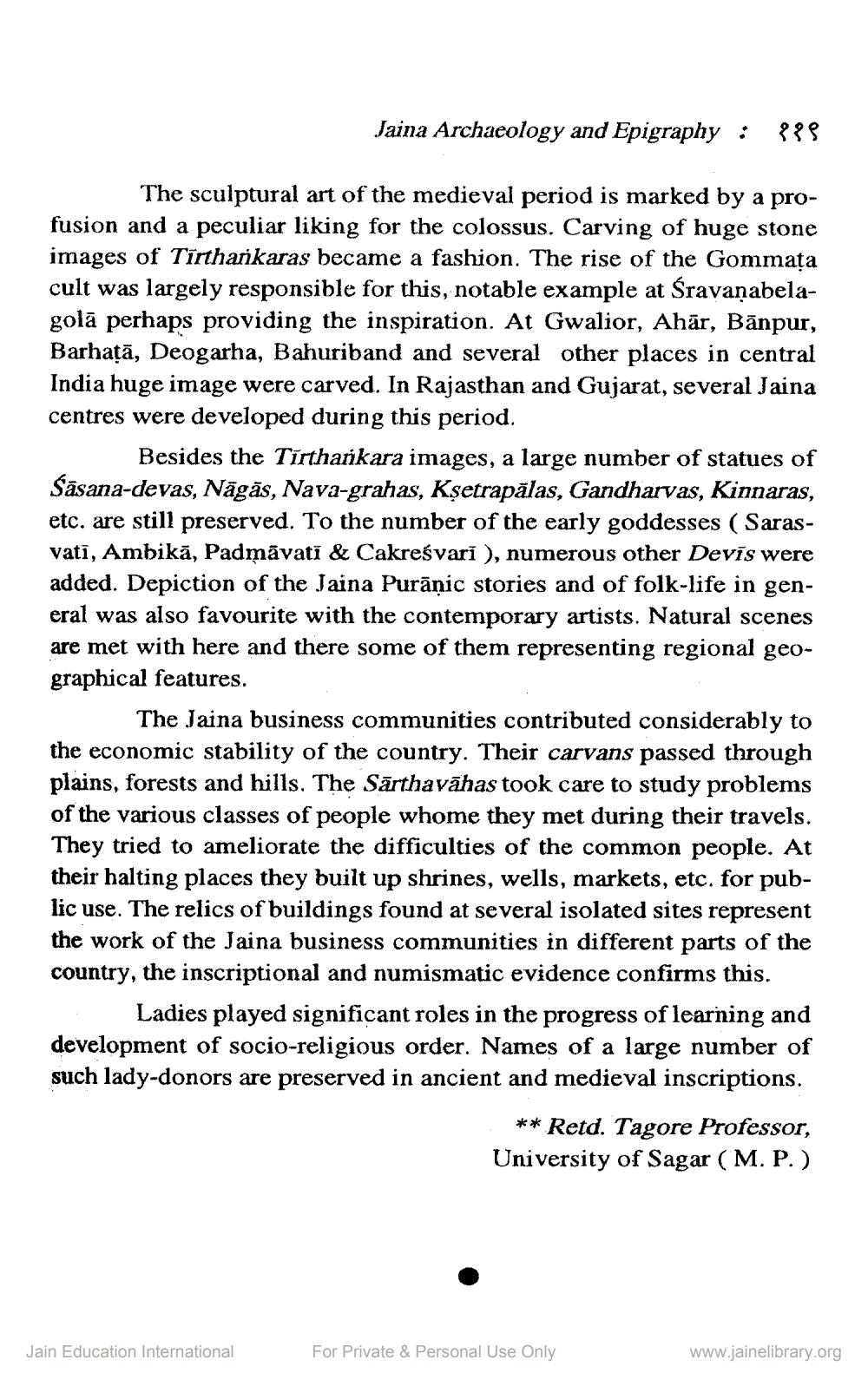________________
Jaina Archaeology and Epigraphy : 388
The sculptural art of the medieval period is marked by a profusion and a peculiar liking for the colossus. Carving of huge stone images of Tīrtharikaras became a fashion. The rise of the Gommata cult was largely responsible for this, notable example at Śravanabelagolā perhaps providing the inspiration. At Gwalior, Ahār, Bānpur, Barhaţā, Deogarha, Bahuriband and several other places in central India huge image were carved. In Rajasthan and Gujarat, several Jaina centres were developed during this period.
Besides the Tírtharikara images, a large number of statues of Sasana-devas, Nāgās, Nava-grahas, Kşetrapălas, Gandharvas, Kinnaras, etc. are still preserved. To the number of the early goddesses ( Sarasvati, Ambikā, Padmavati & Cakreśvari ), numerous other Devis were added. Depiction of the Jaina Purānic stories and of folk-life in general was also favourite with the contemporary artists. Natural scenes are met with here and there some of them representing regional geographical features.
The Jaina business communities contributed considerably to the economic stability of the country. Their carvans passed through plains, forests and hills. The Sārthavāhas took care to study problems of the various classes of people whome they met during their travels. They tried to ameliorate the difficulties of the common people. At their halting places they built up shrines, wells, markets, etc. for public use. The relics of buildings found at several isolated sites represent the work of the Jaina business communities in different parts of the country, the inscriptional and numismatic evidence confirms this.
Ladies played significant roles in the progress of learning and development of socio-religious order. Names of a large number of such lady-donors are preserved in ancient and medieval inscriptions.
** Retd. Tagore Professor, University of Sagar (M.P.)
Jain Education International
For Private & Personal Use Only
www.jainelibrary.org




